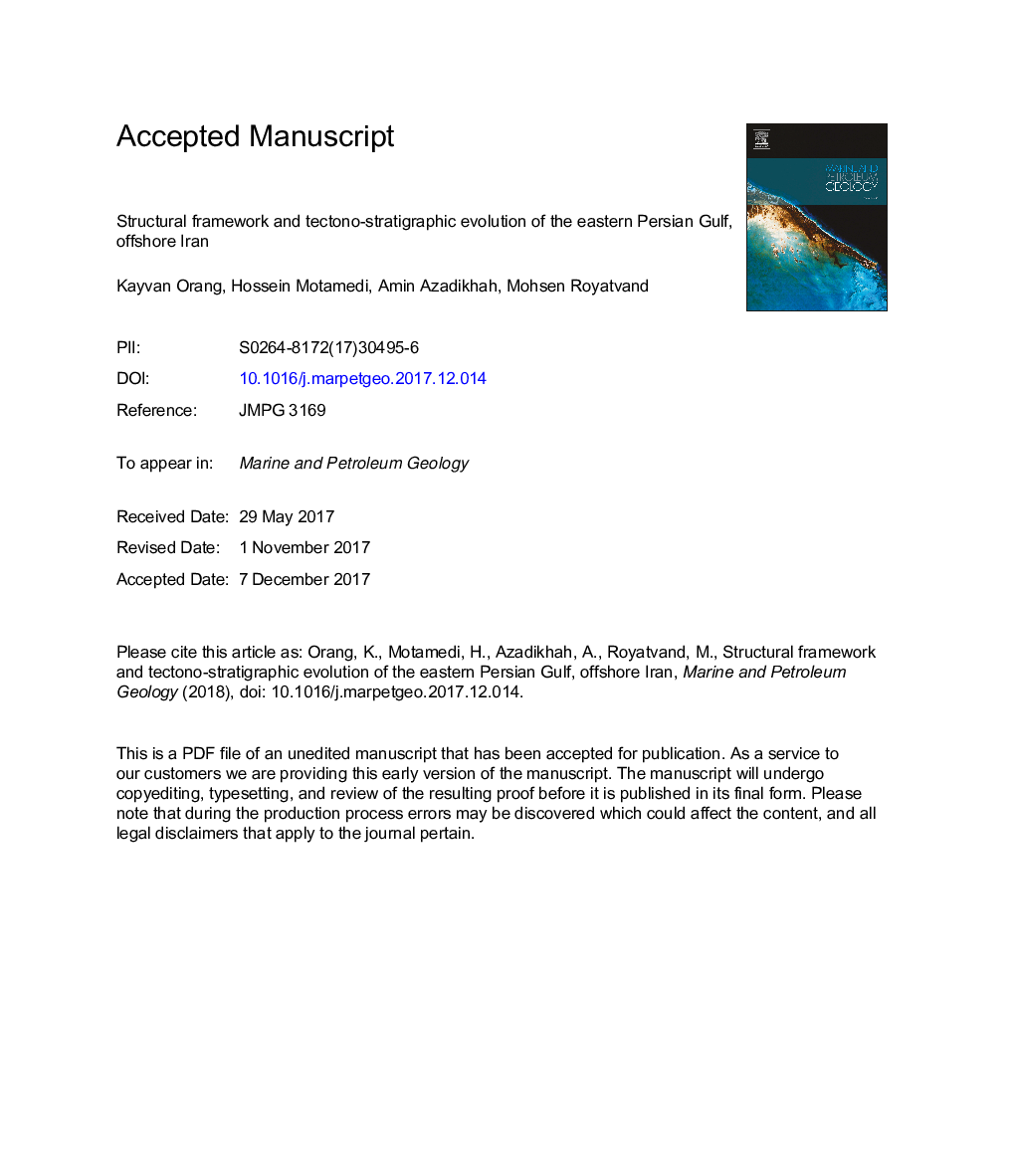| کد مقاله | کد نشریه | سال انتشار | مقاله انگلیسی | نسخه تمام متن |
|---|---|---|---|---|
| 8909154 | 1637134 | 2018 | 46 صفحه PDF | دانلود رایگان |
عنوان انگلیسی مقاله ISI
Structural framework and tectono-stratigraphic evolution of the eastern Persian Gulf, offshore Iran
ترجمه فارسی عنوان
چارچوب سازه و تکامل تکتون-چینه شناسی خلیج فارس، دریای خزر ایران
دانلود مقاله + سفارش ترجمه
دانلود مقاله ISI انگلیسی
رایگان برای ایرانیان
کلمات کلیدی
خلیج فارس، تکامل تکتونیکی، تنگه هرمز، ایران، حوضه فریدپ، عمان،
موضوعات مرتبط
مهندسی و علوم پایه
علوم زمین و سیارات
زمین شناسی اقتصادی
چکیده انگلیسی
Seismic and well data are utilised to describe the tectono-stratigraphic evolution of the eastern Persian Gulf during the Late Mesozoic and Cenozoic. The structural framework of the study area is the result of the Late Cretaceous to Early Miocene Oman Orogeny overprinted by the southwestward advance of the Zagros Orogeny through the Late Miocene and Pliocene. Two structural domains can be identified; The NE-SW trending Musandam Fold-Thrust Belt (MFTB) and the NW-SE trending Persian Gulf foredeep basin. The MFTB formed as a result of multiple compressional events (Late Cretaceous, Late Paleocene to Early Eocene and Late Oligocene to Early Miocene). The first compressional event (Cenomanian- Turonian to the Maastrichtian) is characterized by emplacement-obduction of the allochthonous rocks onto the passive continental margin of the Arabian plate in the Oman Mountains. This event led to regional deformation and uplift which caused deep erosion of the Albian to Santonian units. During the Santonian to Maastrichtian, in addition to regional deformation, a NE-SW trending foredeep basin developed in front of the Late Cretaceous thrust sheets creating accommodation space for turbiditic deposits of the Gurpi Formation. During the Late Paleocene- Early Eocene, initiation of a new compressional deformation led to establishment of the Pabdeh foredeep basin. In this stage, the basin depocenter migrated â¼30Â km to the west. The third compressional event began in the Late Oligocene reaching a climax in the Early Miocene. This event resulted in regional deformation and uplift which caused deep erosion of the pre-Middle Miocene strata. The Persian Gulf foredeep basin has developed in front of the rising Zagros Mountains since Late Miocene- Pliocene. Folding related to advancement of the Zagros Orogeny into the Persian Gulf is mainly restricted to northeastern flank (near the coast of Iran). The effect of folding decreases to the south of the Zagros Deformational Front.
ناشر
Database: Elsevier - ScienceDirect (ساینس دایرکت)
Journal: Marine and Petroleum Geology - Volume 91, March 2018, Pages 89-107
Journal: Marine and Petroleum Geology - Volume 91, March 2018, Pages 89-107
نویسندگان
Kayvan Orang, Hossein Motamedi, Amin Azadikhah, Mohsen Royatvand,
